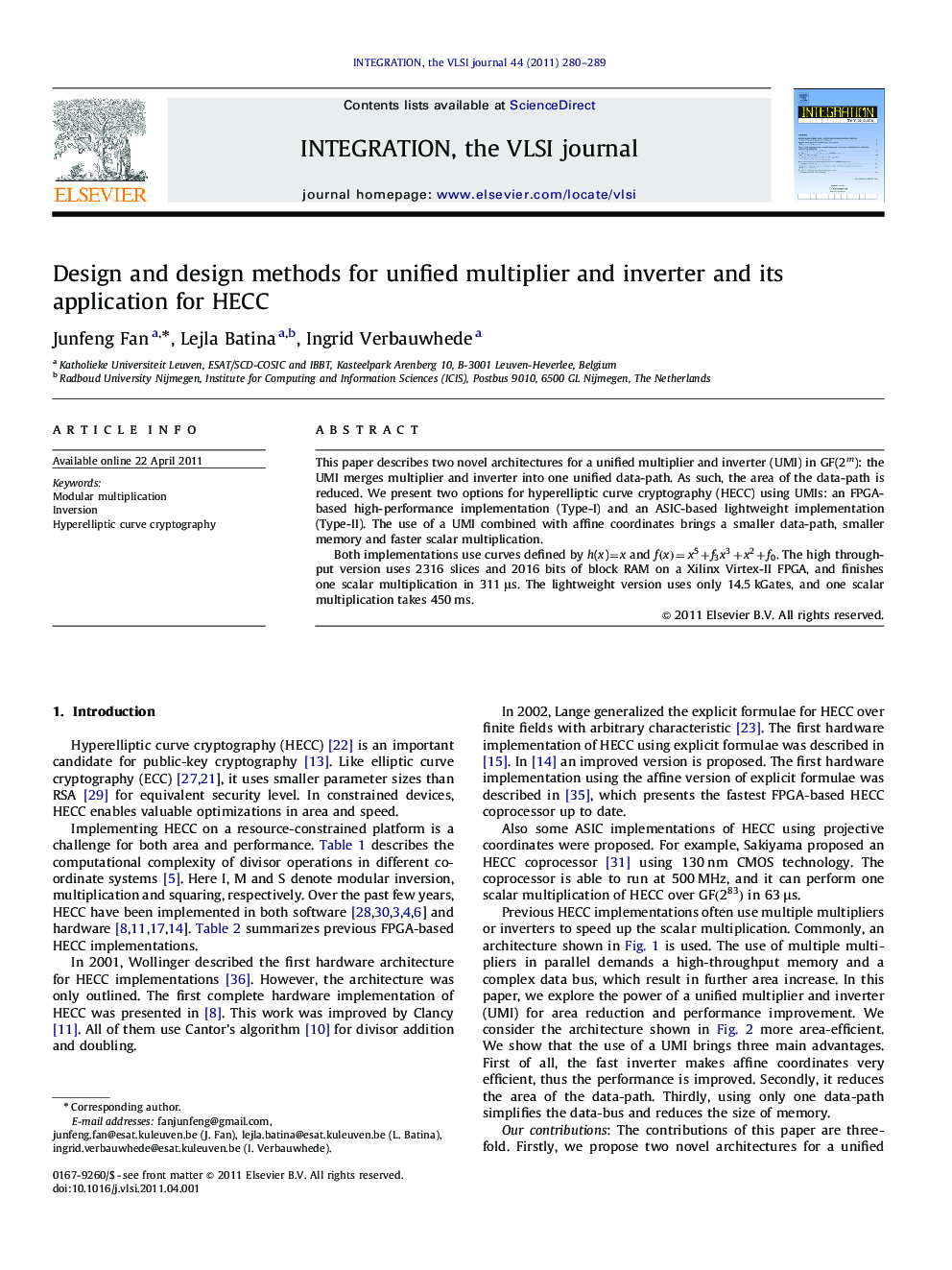| Article ID | Journal | Published Year | Pages | File Type |
|---|---|---|---|---|
| 542818 | Integration, the VLSI Journal | 2011 | 10 Pages |
This paper describes two novel architectures for a unified multiplier and inverter (UMI) in GF(2m): the UMI merges multiplier and inverter into one unified data-path. As such, the area of the data-path is reduced. We present two options for hyperelliptic curve cryptography (HECC) using UMIs: an FPGA-based high-performance implementation (Type-I) and an ASIC-based lightweight implementation (Type-II). The use of a UMI combined with affine coordinates brings a smaller data-path, smaller memory and faster scalar multiplication.Both implementations use curves defined by h(x)=x and f(x)=x5+f3x3+x2+f0f(x)=x5+f3x3+x2+f0. The high throughput version uses 2316 slices and 2016 bits of block RAM on a Xilinx Virtex-II FPGA, and finishes one scalar multiplication in 311μs. The lightweight version uses only 14.5 kGates, and one scalar multiplication takes 450 ms.
► Two novel architectures for a unified multiplier and inverter in GF(2m). ► An FPGA-based HECC design finishes one scalar multiplication in 311μs. ► An ASIC HECC design uses only 14.5 kGates.
